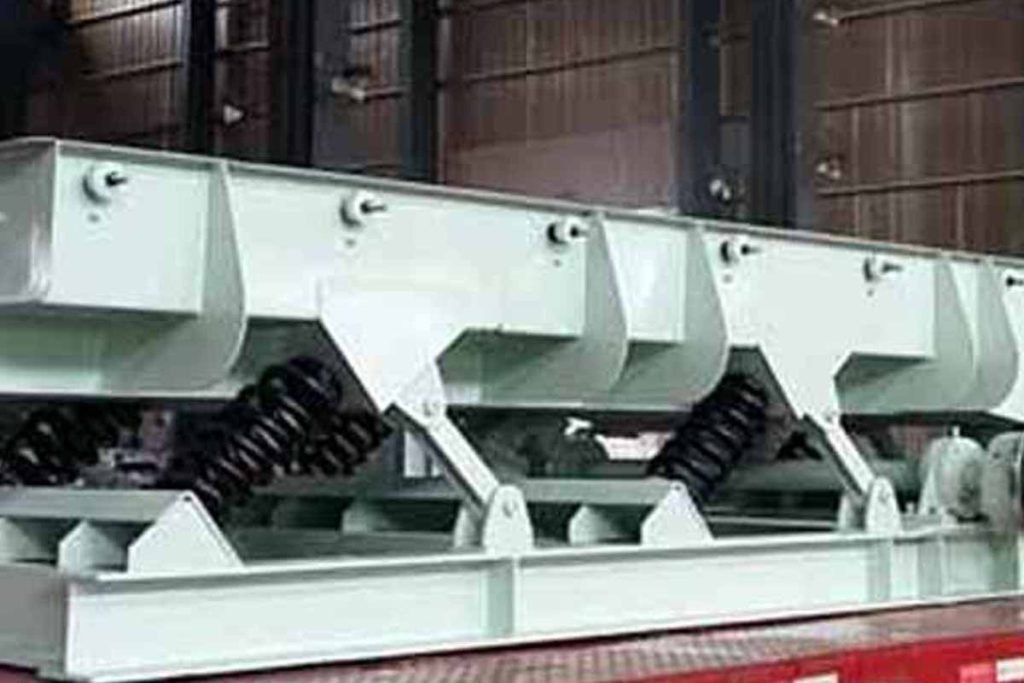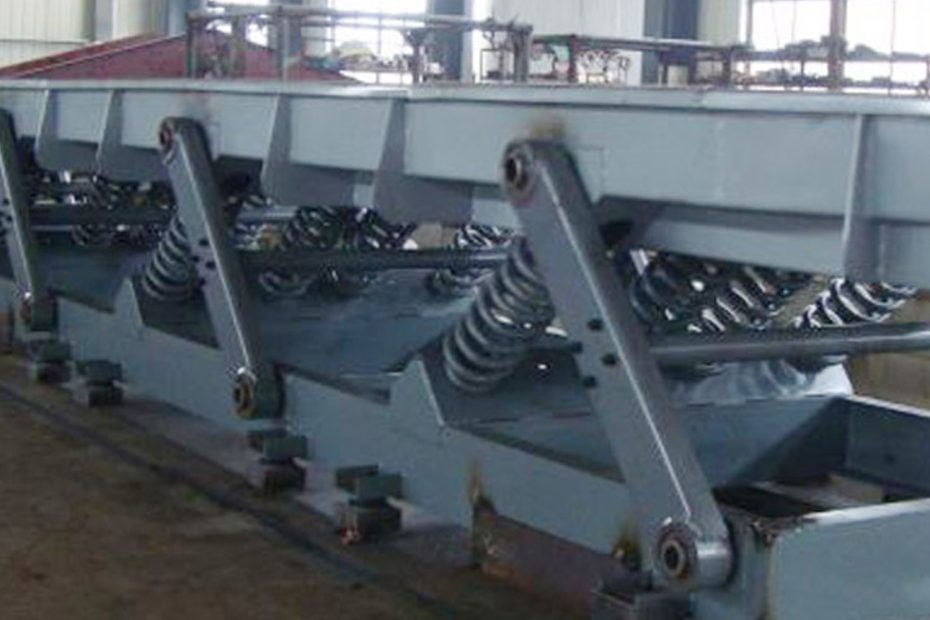Vibrating conveyors are mainly used to convey loose block or granular materials in horizontal or small inclination conditions, and can also convey powdered materials with a particle size of no more than 74μm. This model can be widely used for conveying powdered and granular materials in metallurgy, coal, building materials, chemicals, glass, electricity, machinery, grain and other industries.
According to their different driving methods, vibrating conveyors can be divided into three types: electromagnetic vibrating conveyors, inertial vibrating conveyors and eccentric connecting rod vibrating conveyors.
Inertial vibrating conveyors mainly use vibration motors as driving sources, and use the vibration of the material trough to quickly convey the materials in the material trough from the inlet to the outlet.

Structural features of inertial vibrating conveyors
- Large conveying capacity, light weight and low power consumption.
- Good load characteristics, the amplitude of the machine trough is little affected by voltage fluctuations on the conveying capacity.
- Simple structure, easy installation and maintenance, few wear parts and less maintenance.
- No special foundation and anchor bolts are required, which is easy to move.
- Good seismic isolation performance, suitable for cement clinker and slag top transportation.
- Reliable operation, low noise, no dust pollution.
Conclusion
The vibration conveyor system has a simple structure and low energy consumption. It is convenient for closed transportation of dusty, toxic and volatile gas materials, which is beneficial to environmental protection.
